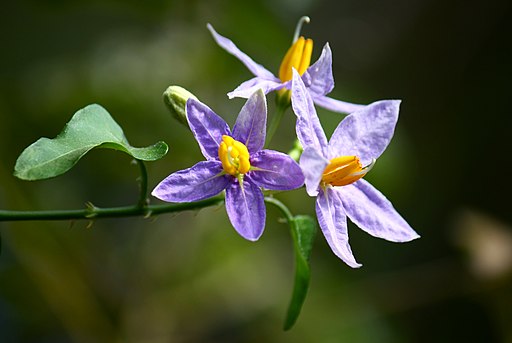Solanaceae is an order of classification for a group of plants known as nightshades. The Solanaceae are a family of plants that ranges from annual and perennial herbs to vines, shrubs, and trees. Included in this family of variety are also a number of agricultural crops like tomatoes, medicinal plants like jimson weed, spices, weeds, and ornamentals. This group of plants are given the term “nightshade” because some of these plants prefer to grow in shady areas, and some flowers at night.
The Solanaceae is one of humankind’s most utilized and important families. It contains some of the world’s most important vegetables as well as some of the most deadly toxic plants. Foods like potato, tomato, peppers, ground cherries, and eggplant all hail from this incredible plant. With the benefits of this plant family also comes the dangerous variety of plants. The belladonna, mandrake, Jimson weed, and tobacco also come from this family. 
CRISPR stands for Clustered Regularly Interspaced Short Palindromic Repeats. It is a gene editing tool that can be used to edit DNA in cells. It used a specific enzyme called Cas9, which stands for CRISPR associated nuclease 9, and a specific RNA guide to either disrupt host genes or insert sequences of interest. CRISPR was initially used in bacteria as an adaptive immunity response but is now being used as an alternative in genome engineering.
In the agricultural world, plant breeding has always been the way to improve the traits wanted in a plant. With technological improvements, increased production has been vastly upgraded. Recent advances in gene editing have revolutionized the field of plant breeding. The process of genetic engineering has allowed people to target specific genes to improve rather than continuous breeding to produce the desired trait.
Consumers choose the type of foods they want to eat by the traits of the fruit/vegetable, and in response, it leads the path to ensure that plant breeding will produce that trait again. In the horticulture industry, fruits are an important food that many people buy. Fruits are known to have a crucial source of energy, vitamins, fibers, and mineral components. The larger the fruit, the less sour and more nutrients it tends to store, influencing consumers to buy fruits that are bigger in size and shape. As a plant family with various crops, Solanaceae crops have a variety of fruit sizes and shape features. With advancing gene editing technology, Solanaceae fruit crops have been on the receiving end of being genetically modified to increase desirable traits of fruit size, fruit weight, fruit quality, and plant architecture.
Many of the vegetables and fruits we eat today are slowly being improved with CRISPR. For instance, in tomatoes, the ARGONAUTE7 (SlAGO7) gene function in leaf shape development was one of the first edits done with CRISPR Cas9. Tomatoes have been at the forefront of CRISPR Cas9 gene editing on plants because it is a model crop that is able to grow variability. Many more plants of the Solanaceae family, like the goji berry and groundcherry, have been engineered to produce the best product and CRISPR gene editing will continue to enhance the fruit and plant.
This CRISPR gene editing research on the order of Solanaceae plants is relevant to AP Biology because of gene editing. In the first year of biology, we learned about the taxonomy of species and the order of specificity. The order of Solanaceae plants indicates that it isn’t a particular family of plants that includes the different genus and species. Instead, it is a broader classification. We didn’t specifically learn about CRISPR gene editing in class this year, but we learned about DNA and RNA and their replication process. In a way, we learned about CRISPR because it relies on a strand of RNA with the preferred traits that is then transcribed into DNA.


Leave a Reply